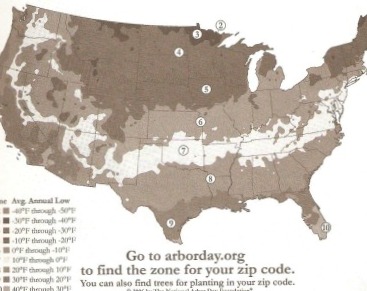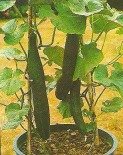|
Planting Zone … is this term confusing you?Here’s all you need to know about Planting Zones and how they Impact on Your Vegetable Garden A Planting zone is simply a grouping of all the areas in North America that have the same minimum temperatures. Was that clear or you’re still a bit confused? Ok, well here’s a scenario to make things a bit clearer… Let’s say we both live in 2 different areas of the North American continent. And almost every year you experience a minimum temperature of -5 degrees Celsius. And in my area I also experience a minimum temperature of -5 degrees Celsius. Then we both live in the same planting zone. There… You see, planting zones isn’t that complicated after all. Now there are basically 12 hardiness zones (another name for planting zones) in the North America. And they’re useful when deciding upon the vegetables for your backyard garden. Here’s a picture of the different zones and the minimum temperatures range associated with each zone.  Ok. It’s in black and white and a bit difficult to make complete sense of. So click here to get a better view. Now I’m sure you realize that the further north you go on the map…the lower the minimum temperature. Places away from the sea are in lower planting zones. Take a look at inland Canada and compare it with areas closer to the sea. See what I mean? And most places in zones 4 to 12 are able to produce almost all kinds of vegetables (I said most because there are other factors that determine the success of a vegetable garden than the minimum temperature). This is not to say that zones 1 to 3 are not capable of growing any vegetables. It just means that some vegetables should be avoided. Vegetables such as…
Now does it mean that 2 Areas that are grouped in the same Hardiness Zones can grow the same Vegetables?It doesn’t. As I said earlier…the minimum temperature is not the only factor in a successful vegetable garden. What about the heat? ...Not because two places experience the same minimum temperature means that they heat up in the same way. Here’s what I mean…
Click here to download a heat map of North America. Have you downloaded it? Ok, great. Now compare it with the hardiness map above (or click here in case you closed off the colored version). Look at Texas and states above it on the hardiness map. They are basically grouped into zone 8. Now compare them on the heat map. You’ll see that Texas has an average of 120 to 150 days per year with temperatures greater than 30 degrees Celsius. But some parts of Arkansas have 90 to 120 days per year above 30 degrees Celsius. This means that crops such as tomatoes would have to be treated slightly different in both states, doesn’t it. You can even compare Texas to New Mexico on both maps for another example. Texas is in zone 8 and New Mexico is in zone 7 on the hardiness map. But look at how different they are when the hotter months come along. Most parts of New Mexico experience a mere 30 to 45 days of temperature above 30 degrees Celsius. But Texas gets 90 to 120 days. This adds to the point that not everything can be grown in New Mexico can thrive in Texas. So at present, I think that knowing what planting zone you’re in is important. But I don’t think you should make too much of a fuss over it. Remember that you’re growing a small garden and not an agricultural estate. So you can always alter the environment around your crops. For example… If you live in colder climates then grow a container vegetable garden and move the crops indoors and place them under lights on colder days. Additionally… you also have the option of growing tomatoes on the western side of your house or in the shade of trees to protect them from the sun’s heat. So go right ahead and grow your vegetables without worrying too much about which zone you’re in.
Or
|









